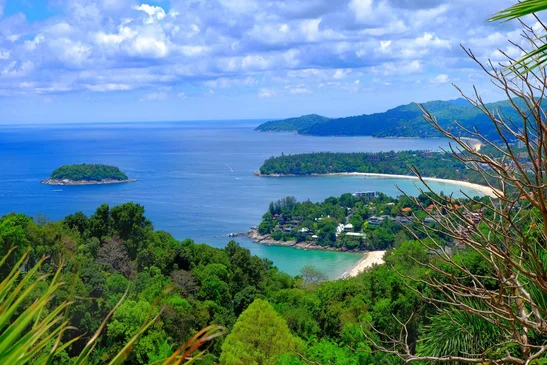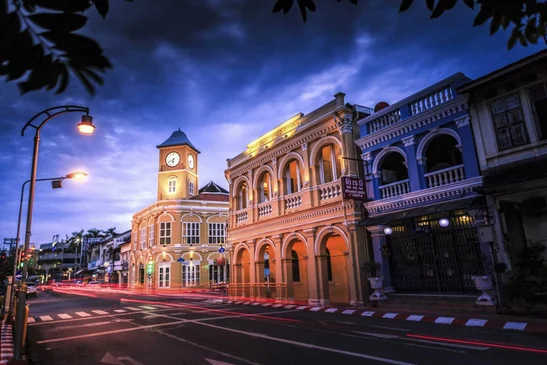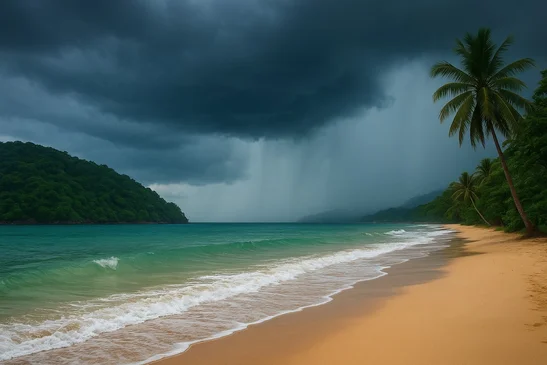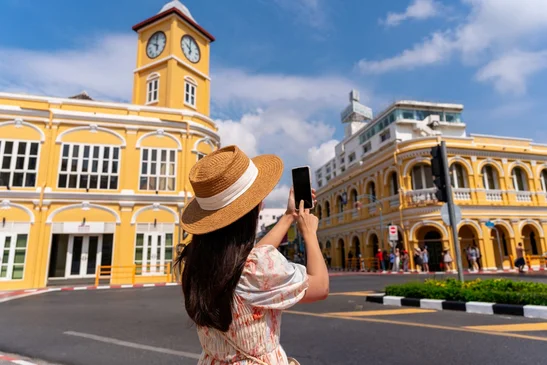Some may be thinking, “what season’s, isn’t it just hot all of the time?”. Well, yes and no. Even though Phuket enjoys a tropical climate various factors further affect the weather here. The longer one resides in Phuket, or anywhere for that matter, the more in tune you become with the subtle differences in the natural cycles. sa

In the simplest terms, Phuket has two seasons: the dry season and rainy season. Some say hot and hotter. When looked at this way the rainy season, commonly referred to as the southwest monsoon period. This period lands roughly between June-October, while some years it might be more like April-December. During this time persistent low pressure weather systems in the equatorial Indian Ocean push moisture-laden air north across south and southeast Asia.
For the mildly observant in Phuket, it is quite noticeable when the transition into and out of monsoon begins because the wind changes direction. When the southwest monsoons begin waking up, which can sometimes start happening as early as April, the wind starts to blow from the west/southwest, onshore for Phuket’s west-coast beaches. It’s not just the direction of the wind that is noticeable, however, as onshore winds blow in warm, moist air from the Andaman Sea.
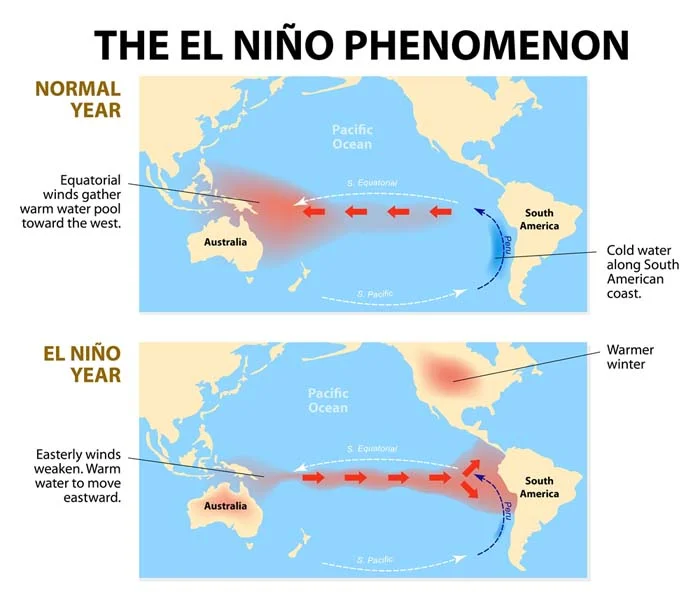
El Nino” or “La Nina Cr: trueplookpanya.com
What can you expect during the southwest monsoon season in Phuket? Well, naturally, rain. Each season can vary significantly regarding how often it rains depending on variables like whether the planet is experiencing an “El Nino” or “La Nina” year. So should you just check the weather report before you walk out the door? While weather forecasts may provide a better idea of what the day’s weather may bring, they are notoriously inaccurate. It’s best to always be prepared for rain during monsoon months. Not all months of monsoon are the same either. On average, September and October deliver the most precipitation in Phuket with well over 300mm (almost one foot) each month. Even when it’s not raining, you can only expect an average of about 3-5 hours of sunshine per day. Those who don’t enjoy cloudy, stormy weather will loathe Phuket’s weather during these months.
Understandably, tourist numbers are at their lowest point during monsoon season, often colloquially referred to as the “green season”. This also pairs with the typical Christmas/New Years holiday season for western countries. Those who visit during monsoon season might not get the beach scenes seen on postcards, but they can get highly discounted hotels and overall cheaper prices in Phuket as well as less crowds.
For all intents and purposes, the other season in Phuket is the flip side of the coin. During these months the winds blow from the east/northeast and bring with them dry air. Rainfall can be 90% less than during the rainy season, and in certain years months can pass on the island without any significant rainfall. It can get surprisingly dry and dusty with tropical foliage desiccated and shriveling. There’s even a significant risk of wildfires this time of year.
This is of course the time of year when all of the postcard photos are taken. There are small, if any, waves and the sea is clear and calm. It’s within these few months where Phuket receives the majority of the millions of tourists who flock to the island. It’s a vastly different vibe with packed beaches, traffic, and hordes of visitors at local attractions. While sun worshippers prefer this time of year, longtime residents in Phuket gradually learn to embrace the turbulent monsoon season and the ebb and flow of life in general throughout the year.
